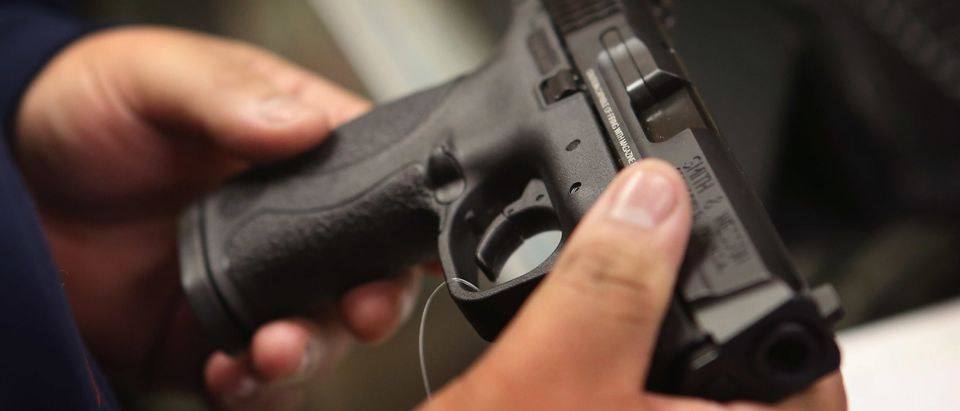By Sam Hoober
Springfield Armory is one of the few companies that is selling a factory pistol with a compensator, the Hellcat RDP (or Rapid Defense Package) which a number of people have a number of opinions about.
Heretofore, compensators have largely been the domain of sport shooting. When the “Roland Special” Glock entered popular culture, the objection was mostly that it would be impossible to conceal which isn’t without merit but isn’t exactly accurate, either.
Is it a gimmick to appeal to tacticool idiots with more money than sense, or is it just proof of the gun culture’s inherent Fuddery? Well…
What’s true outside of gun- and shooting-related stuff is also true in gun- and shooting-related stuff. Sport influences what you get on the consumer market.
While disc brakes were offered on some passenger cars intermittently, car makers didn’t offer them as standard equipment on most cars until decades of use in racing proved they worked better than drum brakes.
Paddle-shifted transmissions, which have rendered the manual transmission completely obsolete (and it is; be mad about it in the comments) were first developed for Formula One racing. Those became standard equipment in F1 by the 90s; today it’s an option on most passenger cars.
A number of hybrid and electric vehicles use regenerative braking and other kinetic energy recovery systems to prolong battery life. And where did it get used first? Formula One and Le Mans Prototype racing.
And so on. In other words, the high-tech sporting stuff eventually becomes common stuff on the street. And those things tend to make driving easier, safer or better in some fashion. Therefore, they are good to have.
Compensators in competitive shooting have been old news for decades. Does that mean a compensator is a good addition to a carry gun?
It damn sure is. In fact, the smaller the gun, the better an idea it becomes.
Compensators redirect gases that are expelled from the barrel when a gun is fired in order to counter the Newtonian forces involved in shooting. We all know the Third Law; every action has an equal and opposite reaction.
Actual recoil forces are that the same force being sent out of the barrel is redirected back at the shooter, most of which is transmitted down the arms and into the legs and is barely perceived if at all.
However, what most people perceive as recoil is the portion of force that’s expelled as gases from the muzzle. That pushes back against the gun, which is held by the shooter, causing the gun to rotate around hand and causing the gun to pivot, aka muzzle rise.
What a compensator does is direct those gases in a specific direction to mitigate muzzle rise, returning the barrel (and therefore the sights) to target faster and allowing faster follow-up shots.
Now, blistering split times aren’t as beneficial for defensive shooting as a fast draw and the ability to accurately place shots. That much is known. How, then, is a compensator beneficial for a defensive handgun?
Because it makes it easier to shoot, which allows you to practice to a higher standard. And part of responsible gun ownership is being competent with it.
Competence takes time, which means practice. The easier it is for you to practice, the better you’ll become under stress.
And there we get to a very, very good idea: whatever makes you more capable, without being unsafe, is definitely a good thing to have on a carry gun. If it makes it easier for a person to train, and to advance their proficiency, it’s a great thing.
Sam Hoober is a hunter and shooter based in the Inland Northwest.


